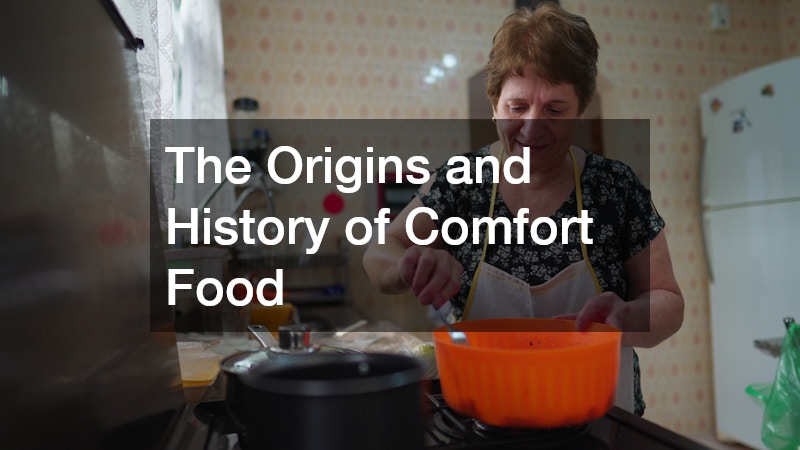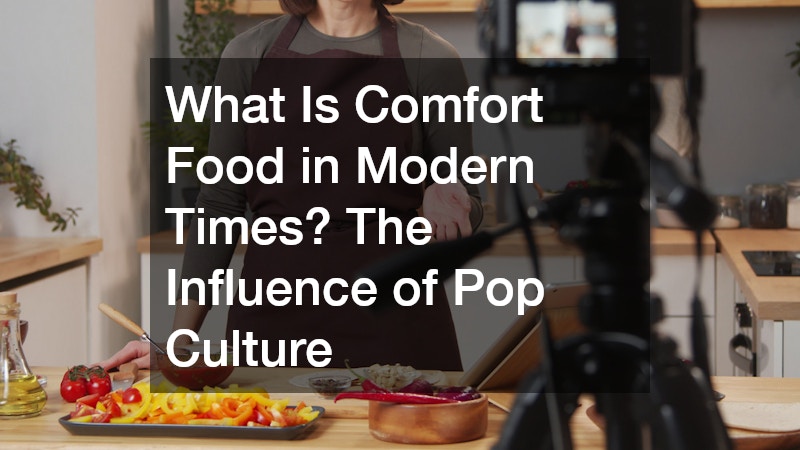Whether it’s your grandmother’s chicken soup, a late-night mac and cheese, or a hearty bowl of ramen on a cold day, comfort food means something special to each of us. But have you ever stopped to ask: What is comfort food, really? Why do these dishes carry such emotional weight? Comfort food is more than just tasty—it’s cultural, nostalgic, and deeply personal.
In this article, we’ll explore the meaning and history of comfort food, examine its emotional and psychological significance, and take a flavorful tour around the globe to see what others find comforting. Whether you’re a food lover, home cook, or simply someone looking for a warm bite of nostalgia, this deep dive will leave you both enlightened and hungry.
What is Comfort Food?
Comfort food refers to dishes that provide a sense of well-being, security, or nostalgia. These foods are typically associated with home cooking, childhood memories, or emotionally significant times in a person’s life. While definitions vary, the common thread is emotional satisfaction. Comfort food isn’t defined by a specific cuisine—it can be anything from lasagna to congee, fried chicken to rice porridge.
Common Characteristics of Comfort Food:
- Warm and hearty – Think soups, stews, casseroles.
- Simple preparation – Often home-cooked and made with love.
- Carbohydrate-rich – Foods like pasta, potatoes, rice, and bread dominate.
- Culturally rooted – What’s comforting in one culture may be unfamiliar in another.
- Emotionally resonant – Linked to family, memories, or key life events.
Though sometimes stereotyped as “unhealthy,” comfort food isn’t always junk food. It can be nutritious or indulgent—its defining quality is emotional, not nutritional.
The Origins and History of Comfort Food

The term “comfort food” wasn’t widely used until the 1970s, though the concept has existed for centuries. People have always turned to familiar foods during times of stress or sadness. The earliest printed reference to the term appeared in a 1966 Palm Beach Post article that described adult eating patterns during emotional distress.
Historically, comfort food emerged in cultures where communal eating and home cooking were central to daily life. Think of Italian “Sunday sauce,” Filipino arroz caldo, or American chicken pot pie—meals that were passed down from generation to generation and became synonymous with love and warmth.
In wartime or economic hardship, people leaned even more heavily on familiar dishes that brought comfort and a sense of normalcy. Even today, amid global crises or personal struggles, the instinct to cook or eat comfort food resurfaces.
Why Do We Crave Comfort Food?
Have you ever wondered why you reach for chocolate after a bad day? Or why grilled cheese tastes better when you’re feeling low?
Psychological Factors:
- Nostalgia – Foods from childhood remind us of simpler times.
- Emotional association – Meals cooked by a loved one carry sentimental value.
- Stress relief – Comfort food can temporarily lower cortisol, the stress hormone.
Biological Responses:
- Serotonin and dopamine – Carbohydrate-rich foods can boost these feel-good brain chemicals.
- Warmth – Hot foods can physically and emotionally soothe us.
Food is deeply connected to our emotions. Studies show that when people eat foods linked to positive memories, they report improved mood, even if the nutritional content is low. That’s the magic of comfort food: it heals in ways that science is just beginning to understand.
Comfort Food Around the World: A Global Perspective
While comfort food is universal, what constitutes comfort varies by region and culture. Here’s a delicious global tour of what people consider comforting:
United States:
- Mac and cheese
- Meatloaf and mashed potatoes
- Chicken noodle soup
Japan:
- Miso soup
- Tonkatsu (fried pork cutlet)
- Onigiri (rice balls)
Philippines:
- Arroz caldo (rice porridge with chicken and ginger)
- Sinigang (sour tamarind soup)
- Champorado (chocolate rice porridge)
Italy:
- Lasagna
- Risotto
- Polenta
India:
- Khichdi (lentils and rice)
- Butter chicken with naan
- Masala chai and pakoras during rainy days
Mexico:
- Tamales
- Pozole (hominy soup)
- Chilaquiles
Each dish carries its own cultural narrative, rooted in family traditions and local ingredients. Comfort food is a culinary language that speaks to the soul, no matter where you are.
What Is Comfort Food During the Holidays?
Holidays are the ultimate comfort food season. From Thanksgiving turkeys to Christmas ham and New Year’s noodles, food takes center stage in celebrating love, togetherness, and tradition.
Holiday Comfort Foods by Occasion:
- Thanksgiving (USA): Stuffing, sweet potato casserole, pumpkin pie
- Lunar New Year (Asia): Dumplings, longevity noodles
- Christmas (Global): Roasted meats, fruitcake, hot chocolate
- Eid (Muslim cultures): Biryani, dates, sweet rice dishes
During festive seasons, comfort food becomes both celebratory and sentimental. It’s the glue that brings people together—and it tastes even better when shared.
The Health Debate: Is Comfort Food Bad for You?
Comfort food often gets a bad rap as being “unhealthy,” but that’s not always fair. While many comfort dishes are rich in calories, fats, or sugars, they serve an emotional function that can’t be ignored.
When Comfort Food Becomes a Problem:
- Emotional overeating – Using food as a coping mechanism for all emotions
- Lack of balance – Consuming high-calorie meals too frequently
- Neglect of nutritional value – Ignoring healthy options due to emotional cravings
Healthy Comfort Food Alternatives:
- Baked sweet potatoes instead of fries
- Homemade soups loaded with vegetables
- Oven-baked chicken instead of fried
- Greek yogurt with fruit instead of ice cream
Moderation is key. Comfort food doesn’t have to be an enemy—it can be part of a balanced and emotionally fulfilling diet.
What Is Comfort Food in Modern Times? The Influence of Pop Culture

Pop culture and digital platforms have expanded the definition of comfort food. Today, viral food trends, nostalgic throwbacks, and TikTok recipes shape what many people crave during tough times.
Examples of Modern Comfort Food Trends:
- Pasta chips and baked feta – Social media sensations
- Instant ramen hacks – A Gen Z favorite
- Fusion comfort foods – Like kimchi grilled cheese or adobo mac and cheese
Modern comfort food is more experimental, but the core idea remains unchanged: it’s food that makes you feel good.
What Is Comfort Food for Special Diets?
With the rise of health-conscious eating and dietary restrictions, people are reinventing comfort food to suit vegan, gluten-free, keto, and other lifestyles.
Vegan Comfort Food:
- Vegan chili
- Plant-based mac and cheese
- Mushroom stroganoff
Keto Comfort Food:
- Cauliflower mash
- Zucchini lasagna
- Almond flour pancakes
Gluten-Free Comfort Food:
- Rice dishes
- Polenta with sautéed mushrooms
- Gluten-free brownies
There’s no reason special diets can’t be comforting. Adaptation and creativity are making comfort food more inclusive than ever before.
Emotional Connections: What Is Comfort Food to You?
The most powerful thing about comfort food is how personal it is. For one person, it’s their mother’s spaghetti; for another, it’s toast with butter eaten during a rainy day. The context matters just as much as the flavor.
Tips for Finding Your Comfort Food:
- Think back to happy childhood meals
- Revisit dishes from special life events
- Consider foods you crave when you’re sad or stressed
Make it a ritual—cooking and eating mindfully can turn any meal into a moment of comfort.
What Is Comfort Food for the Sick or Heartbroken?
Comfort food takes on an even deeper meaning when you’re feeling physically or emotionally unwell. During illness, people often turn to warm, soothing dishes that are easy to digest and reminiscent of home care. Likewise, when you’re heartbroken or emotionally drained, food can offer a sense of safety and grounding. Popular examples include:
- Chicken soup – A staple for cold or flu recovery.
- Rice porridge or congee – Easy on the stomach, common in many Asian households.
- Ice cream or chocolate – Often associated with heartbreak and emotional relief.
- Toast and tea – A simple, calming ritual during hard times.
Comfort food in these contexts isn’t just about taste—it’s about care, healing, and feeling seen.
Childhood Favorites: The Foundation of Lifelong Comfort
Many comfort foods trace their roots back to childhood. These are the meals prepared by parents or grandparents, enjoyed during special occasions or daily routines. Over time, they become emotionally charged symbols of love, protection, and identity. Childhood comfort foods often include:
- Peanut butter and jelly sandwiches
- Spaghetti with meatballs
- Pancakes on weekend mornings
- Hot chocolate after playing in the cold
As adults, we may recreate or seek these dishes to recapture a sense of innocence or joy. That’s the beauty of childhood comfort food—it doesn’t just fill our stomachs, it brings back a simpler time.
Comfort Food Rituals: More Than Just Eating
Comfort food isn’t just about what’s on the plate—it’s about how, when, and with whom you eat it. Many people have specific rituals that elevate their comfort food experience. These could be:
- Late-night snacking while watching favorite shows
- Weekend family brunches featuring nostalgic dishes
- Cooking the same recipe every holiday or birthday
- Eating certain meals when it rains or snows
These habits create emotional patterns and anticipation, turning meals into healing rituals. When you’re stressed or lonely, even the ritual of preparing comfort food can provide a sense of order and calm.
The Future of Comfort Food: Sustainability and Innovation
As people become more conscious of health, climate change, and food sourcing, the definition of comfort food is evolving. Today’s food lovers are finding ways to enjoy their favorite dishes while honoring environmental and ethical values. Some innovations include:
- Plant-based versions of meaty classics (e.g., lentil shepherd’s pie)
- Locally sourced ingredients for traditional recipes
- Low-sodium or sugar-free alternatives for health-conscious eaters
- Lab-grown or cultured meat in comfort food staples
The future of comfort food blends tradition with innovation. As needs change, so will recipes—but the emotional heart of comfort food will remain the same.
Conclusion: Comfort Food Is Culture, Emotion, and Memory on a Plate
Comfort food is far more than the sum of its ingredients. It’s a time machine, a source of emotional healing, and a reflection of who we are. From hearty stews to sweet desserts, these dishes remind us of family, home, and personal joy. As food trends evolve and diets change, the need for emotional nourishment through food remains timeless.
So the next time you crave a warm bowl of something delicious, don’t feel guilty—embrace it. You’re not just feeding your body. You’re feeding your soul.
